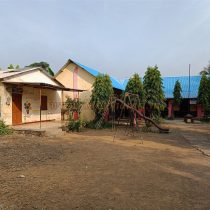CHATALE KOT
TYPE : FORTRESS
DISTRICT : PALGHAR
HEIGHT : 0
GRADE : EASY
Due to Bombay, the Konkan region is divided into two parts namely North Konkan and South Konkan. The stretch from Vasai to Daman is known as North Konkan and the stretch from Alibaug to Karwar is known as South Konkan. As the Portuguese ruled North Konkan for a long time, they built many small forts along the coast for the protection and administration of this area. Most of these forts have been extensively eroded and very few remains remain while some forts have been completely destroyed. One such fort that has gone behind the curtain of time and shows its existence only on paper is Chatale fort. Safale railway station of Western Railway is the nearest place to visit Chatale village where Chatale Fort was located and the distance from railway station to Chatale is about 8 km. Buses and rickshaws are available to reach Chatale.
...
Except for a few elderly locals, hardly anyone knows about this fort. These people also know this Fort as “Madi”. This fort existed near a lake in the village. Today it has been completely leveled and a school and village panchayat office has been set up at that place. This is the identity of the place where the fort was located. As the Fort has completely collapsed and barely anything is left, it cannot be said with certainty whether this place is tax collection place or Fort. Looking at the location and size of this Fort, this Fort may have been used as watch tower or tax collection place during the Portuguese era. Talking to the local elders, they say that this place is a place for collecting Zakat (tax in the form of grain). Built by the Portuguese around the 16th century, the main purpose of these lookout forts was to protect waterways and provide necessary logistics to small and large forts in the province. Using all these small forts, watchtowers and big cannons, the Portuguese established their empire along the North Konkan sea route. During the Vasai campaign of 1739 AD, this area came under the control of the Marathas and the Portuguese left the region forever.
© Suresh Nimbalkar





